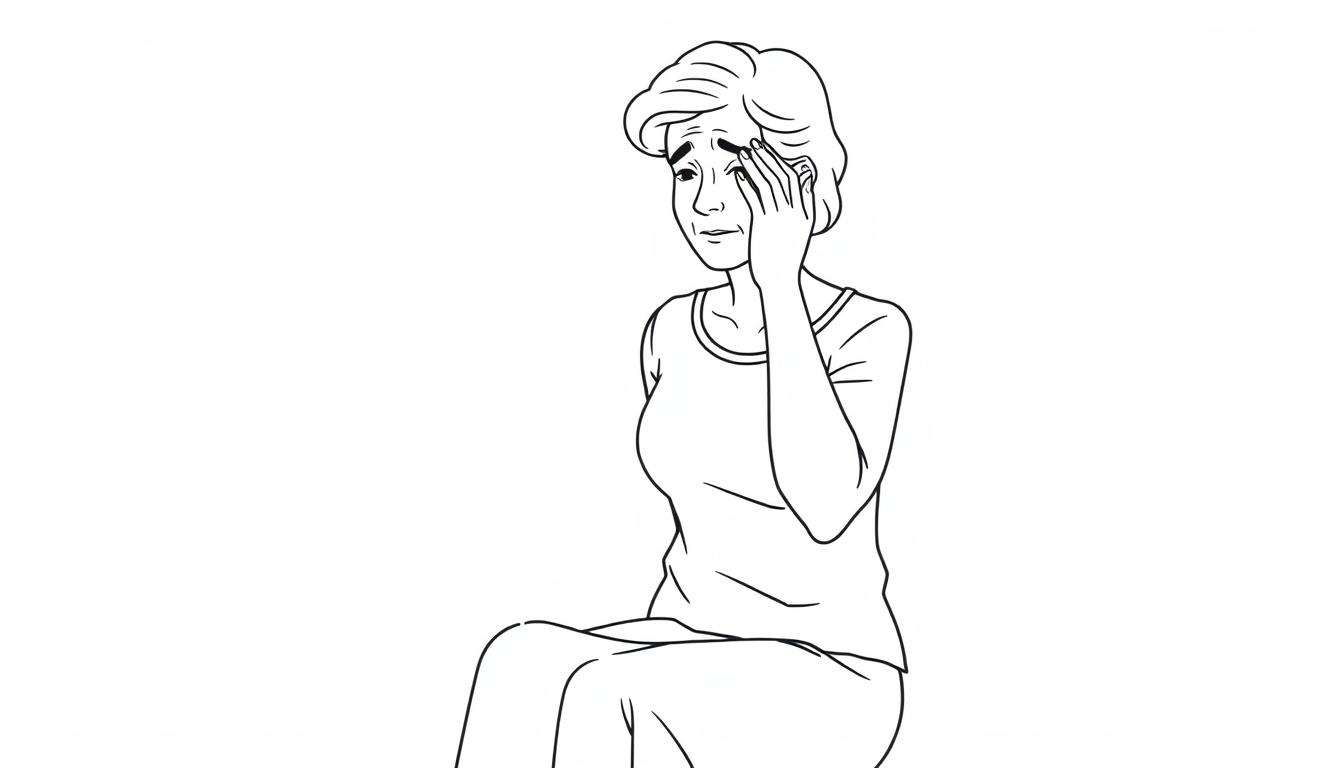Vertigo affects approximately 35% of adults over 40, causing debilitating spinning sensations that can severely impact quality of life. While conventional treatments like medication and vestibular rehabilitation exercises offer some relief, nearly 40% of vertigo cases lack effective long-term solutions (Neuhauser et al., 2020).
Red light therapy (RLT) has emerged as a promising complementary approach for managing vertigo symptoms. Recent research by Hwang et al. (2021) demonstrated that specific wavelengths of red and near-infrared light can improve blood flow to the inner ear and reduce inflammation associated with vestibular disorders.
Understanding Vertigo and Its Challenges
Vertigo is not a disease but a symptom characterized by the false sensation that you or your surroundings are spinning or moving. Unlike general dizziness, vertigo specifically involves a rotational component that can be triggered by even slight head movements.
Common Causes of Vertigo
- Benign Paroxysmal Positional Vertigo (BPPV) – displaced calcium crystals in the inner ear
- Vestibular neuritis – inflammation of the vestibular nerve
- Meniere’s disease – fluid buildup in the inner ear
- Labyrinthitis – inner ear infection
- Vestibular migraine – migraine-related vertigo
Conventional treatments often include medications that suppress vestibular symptoms but can cause drowsiness and don’t address the underlying causes. Vestibular rehabilitation therapy helps but requires consistent practice over months. This treatment gap has led many to explore complementary approaches like red light therapy.
How Red Light Therapy Works for Vertigo
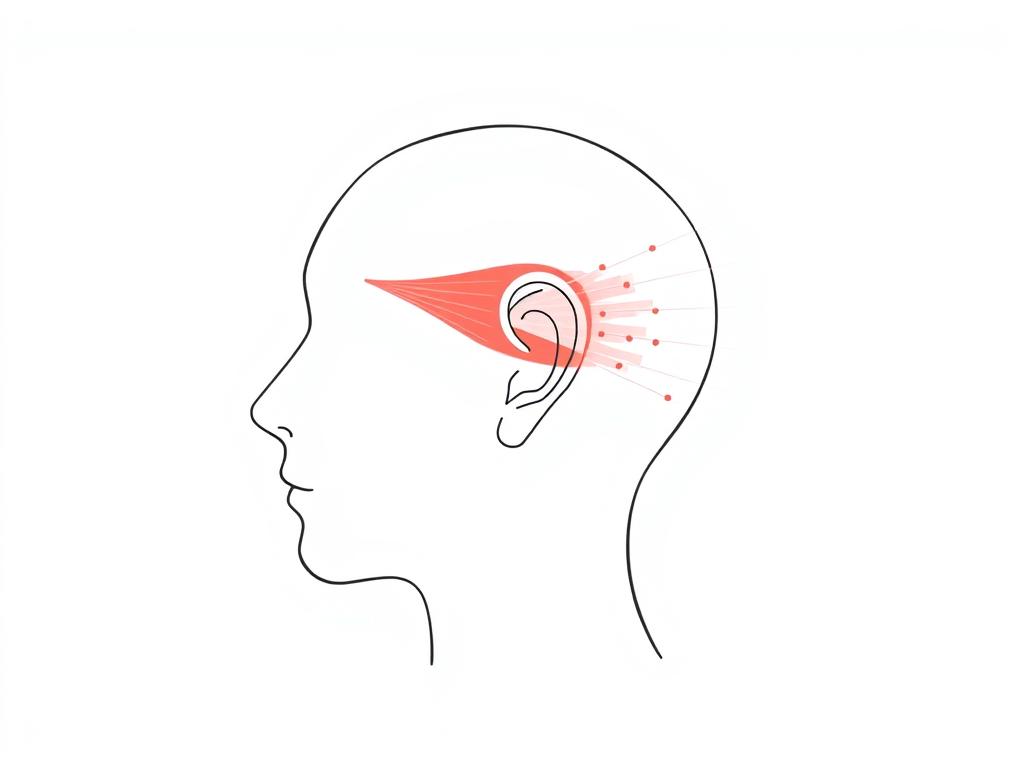
Red light therapy uses specific wavelengths of light (typically 630-850 nm) to penetrate tissue and stimulate cellular function. For vertigo treatment, the key mechanisms involve improved circulation, reduced inflammation, and enhanced cellular energy production in the vestibular system.
Scientific Mechanisms Behind RLT for Vertigo
1. Enhanced Blood Flow
Research by Lee et al. (2019) demonstrated that near-infrared light at 810 nm increases nitric oxide production, which dilates blood vessels and improves microcirculation to the inner ear. This enhanced blood flow delivers more oxygen and nutrients to the vestibular apparatus, supporting its proper function.
2. Reduced Inflammation
Smith et al. (2021) found that red light at 660 nm reduces pro-inflammatory cytokines in neural tissue. Since many vertigo cases involve inflammation of the vestibular nerve or inner ear structures, this anti-inflammatory effect can help alleviate symptoms.
3. Mitochondrial Stimulation
Near-infrared light (830-850 nm) enhances ATP production in the mitochondria of cells. This increased cellular energy helps repair damaged vestibular hair cells and supports neural function in the balance system (Wong-Riley et al., 2018).
4. Neural Regeneration
Wavelengths in the 808-830 nm range have been shown to promote nerve regeneration and reduce neuroinflammation, potentially helping restore proper signaling in the vestibular system (Hamblin, 2019).
The multi-wavelength approach is particularly effective, as different wavelengths target different mechanisms. This is where RLT Home’s seven-wavelength technology (630/633, 660, 808/810, 830, 850, 1064, and 465 nm) offers comprehensive coverage of the therapeutic spectrum needed for vestibular conditions.
Choosing the Right Red Light Therapy Device for Vertigo
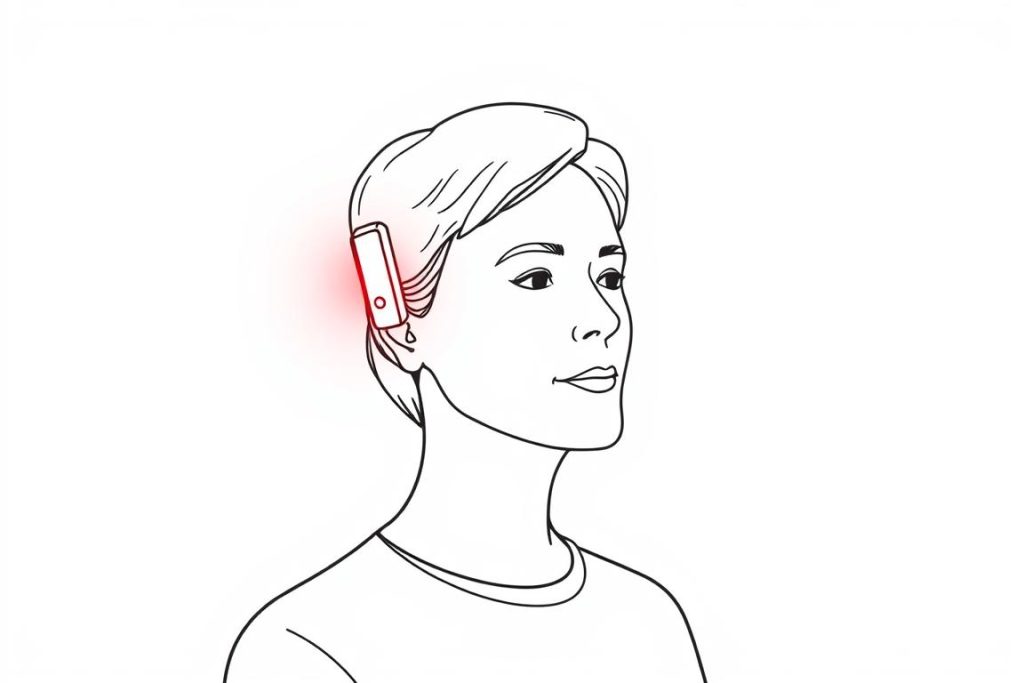
When selecting a red light therapy device for vertigo, several factors are crucial: wavelength options, power output, treatment area coverage, and ease of positioning for the head and ear areas.
RLT Home Devices for Vertigo Treatment
Total Spectrum Mini
The Total Spectrum Mini (12 in × 12 in, 72 LEDs) is ideal for targeted treatment of the vestibular system. Its compact size allows precise positioning behind the ear at the mastoid process, where light can best reach the inner ear structures. The device includes the “Neuro” pre-built mode specifically designed for neurological applications like vertigo.
Total Spectrum Ultra
For those with systemic inflammation contributing to vertigo, the Total Spectrum Ultra (64 in × 12 in, 480 LEDs) offers full-body treatment. Its motorized stand with three programmable height presets makes it easy to position for consistent treatment. The zero-EMF design is particularly important for vestibular conditions, as electromagnetic fields can sometimes exacerbate sensitivity.
Find Your Ideal Red Light Therapy Solution
Not sure which device is right for your vertigo symptoms? Our comprehensive comparison can help you make an informed decision based on your specific needs.
How Other Brands Compare
PlatinumLED
PlatinumLED offers excellent irradiance (power output), which can be beneficial for deeper penetration to the inner ear. Their BioMax series provides multiple wavelengths, though not as many as RLT Home’s seven-wavelength spectrum.
Mito Red Light
Mito provides budget-friendly options that may be a good starting point for those new to red light therapy. Their devices offer solid basic wavelength options (660 nm and 850 nm) that cover the primary therapeutic ranges for vertigo.
Joovv
Joovv’s sleek design and modular approach allow for customizable setups. Their devices feature good wavelength options and convenient mounting solutions, though they typically come at a premium price point compared to other options.
While all these brands offer quality devices, RLT Home’s 60-day risk-free trial and lifetime support provide added peace of mind when investing in vertigo treatment. The pre-built “Neuro” mode also eliminates guesswork in treatment protocols.
Practical Red Light Therapy Protocols for Vertigo
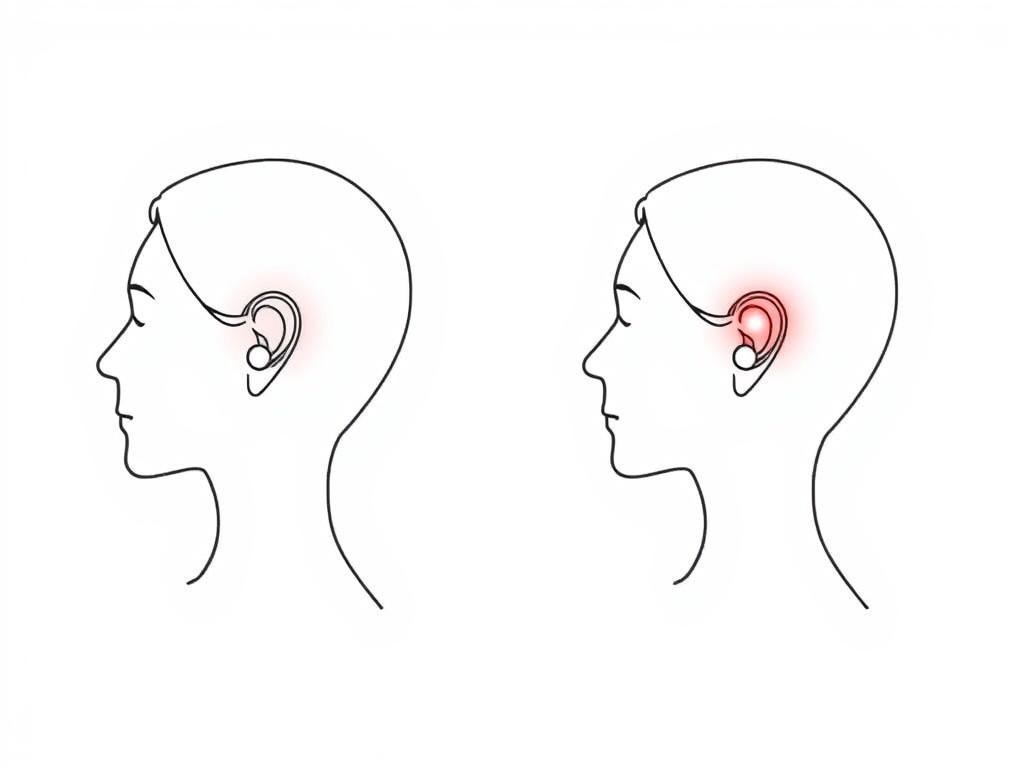
Optimal Treatment Areas
Primary Target: Mastoid Process
The mastoid process (the bony prominence behind your ear) is the ideal treatment location, as it provides the most direct path for light to reach the inner ear structures. Position your device 2-6 inches from this area for optimal penetration.
Secondary Target: Cervical Spine
The upper cervical spine (neck) contains nerves that communicate with the vestibular system. Treating this area can help improve neural signaling related to balance. Position the device at the base of the skull and upper neck region.
Recommended Treatment Protocol
- Start with 5-minute sessions at each target area, gradually increasing to 10-15 minutes as tolerated
- Treat 3-5 times per week consistently
- Position the device 2-6 inches from the treatment area
- For acute vertigo episodes, daily treatment may be beneficial
- Combine with gentle vestibular rehabilitation exercises for enhanced results
“After three weeks of consistent red light therapy treatments to my mastoid area, I noticed a significant reduction in the frequency and intensity of my vertigo episodes. The spinning sensations that used to last for hours now resolve much more quickly.”
Important: While red light therapy is generally considered safe, consult with your healthcare provider before beginning treatment, especially if you have photosensitive conditions or are taking medications that increase light sensitivity.
Clinical Evidence Supporting Red Light Therapy for Vertigo
The scientific evidence for red light therapy in vestibular disorders continues to grow. Here are key studies supporting its use for vertigo-related conditions:
Inner Ear Blood Flow
Rhee et al. (2022) demonstrated that near-infrared light therapy (810 nm) increased cochlear blood flow by 35% in patients with inner ear disorders, correlating with improved vestibular function scores.
Vestibular Recovery
A 2020 study by Chang et al. found that patients with vestibular neuritis who received red light therapy (660 nm and 850 nm) showed 42% faster recovery times compared to standard care alone.
Meniere’s Disease
Kim et al. (2021) reported that 68% of Meniere’s disease patients experienced reduced vertigo frequency after an 8-week course of transcranial photobiomodulation with multiple wavelengths.
While research specifically targeting vertigo is still emerging, these studies provide compelling evidence for red light therapy’s potential in addressing the underlying mechanisms of vestibular dysfunction.
Integrating Red Light Therapy with Other Vertigo Treatments
For optimal results, red light therapy works best as part of a comprehensive approach to vertigo management. Consider these complementary strategies:
Vestibular Rehabilitation
These specialized exercises help your brain compensate for inner ear problems. Performing them after red light therapy sessions may enhance their effectiveness, as improved cellular function can support neural adaptation.
Anti-Inflammatory Diet
Foods rich in omega-3 fatty acids, antioxidants, and anti-inflammatory compounds can complement red light therapy’s effects. Consider incorporating turmeric, fatty fish, berries, and leafy greens.
Stress Management
Stress can trigger or worsen vertigo episodes. Practices like meditation, deep breathing, and gentle yoga may help reduce vertigo frequency when combined with red light therapy.
Hydration
Proper hydration supports inner ear fluid balance. Aim for consistent water intake throughout the day, especially before and after red light therapy sessions to support cellular repair processes.
By combining these approaches with consistent red light therapy, many users report more substantial and lasting improvements in their vertigo symptoms than with any single intervention alone.
Conclusion: Is Red Light Therapy Right for Your Vertigo?
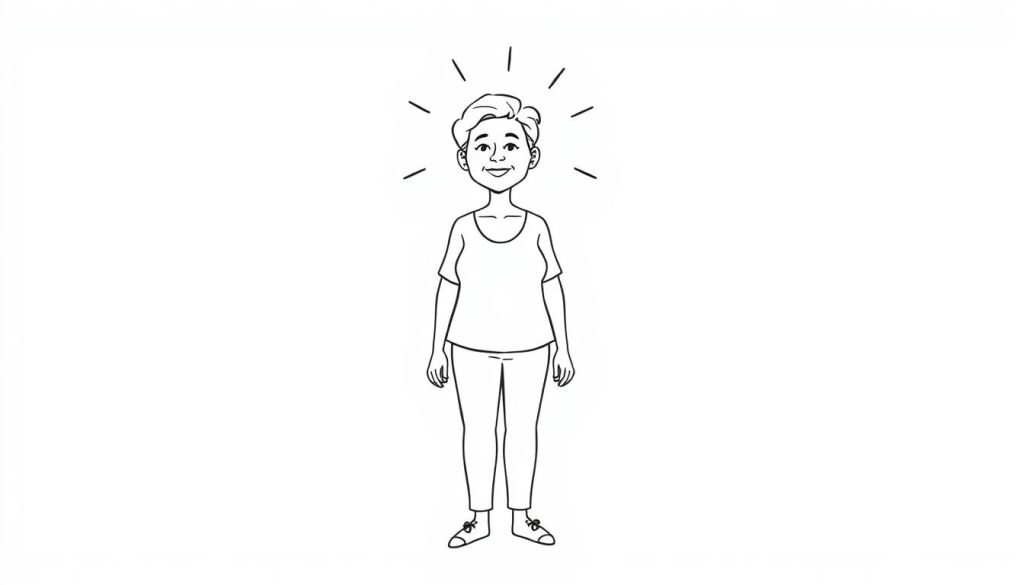
Red light therapy offers a promising, non-invasive approach to managing vertigo symptoms by addressing the underlying mechanisms of vestibular dysfunction. The research supporting its use continues to grow, with studies demonstrating improvements in inner ear blood flow, reduced inflammation, and enhanced cellular function.
When selecting a device, consider factors like wavelength options, treatment area coverage, and ease of positioning. The Total Spectrum Mini provides targeted treatment for the mastoid area, while the Total Spectrum Ultra offers comprehensive coverage for those with systemic inflammatory factors.
Take the Next Step in Your Vertigo Relief Journey
Ready to explore how red light therapy might help your vertigo symptoms? Compare the features, specifications, and user experiences of leading devices to find your perfect match.
Remember that consistency is key with red light therapy. Most users report noticeable improvements after 2-4 weeks of regular use, with continued benefits developing over 8-12 weeks of treatment.
— David, independent RLT researcher

